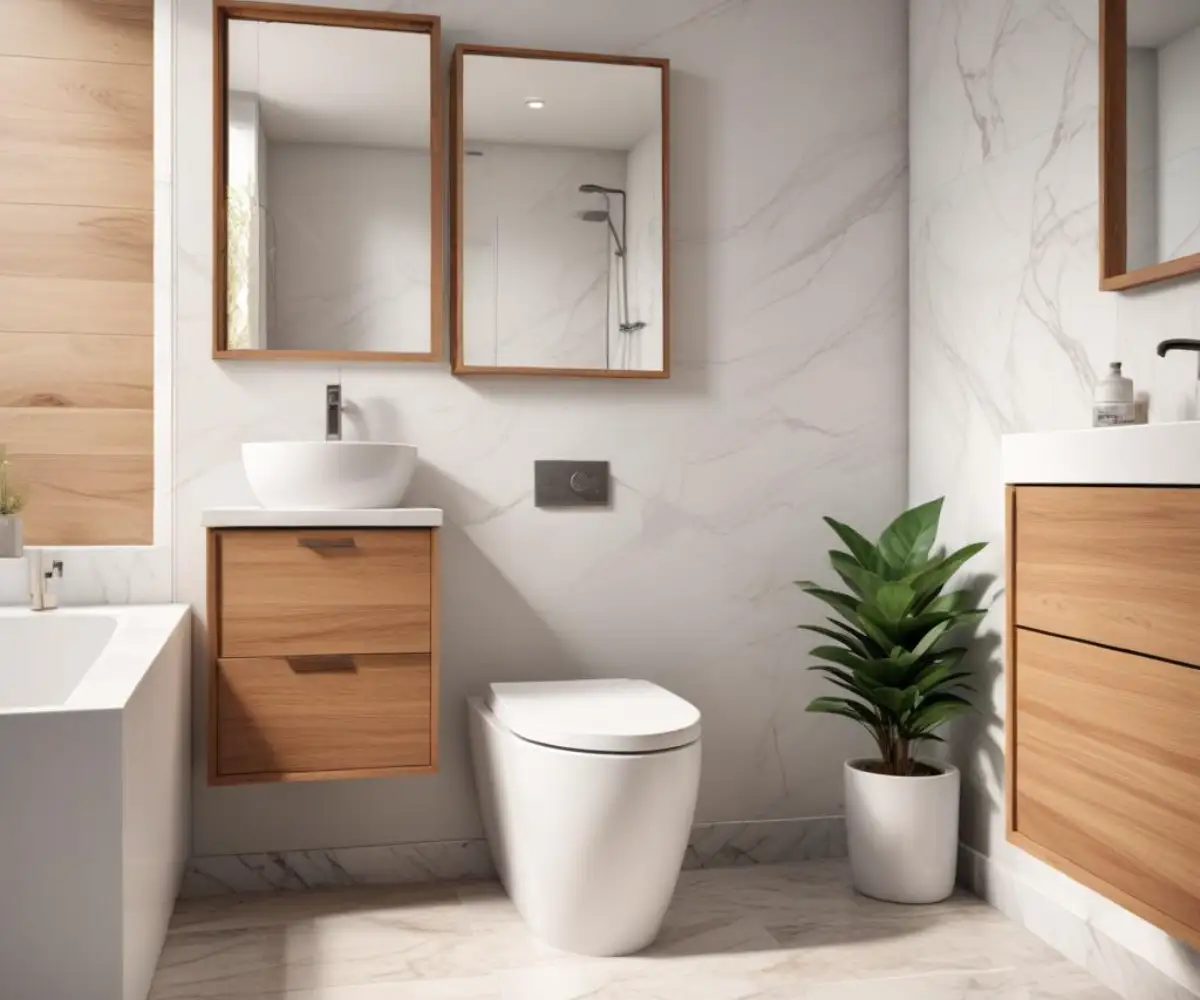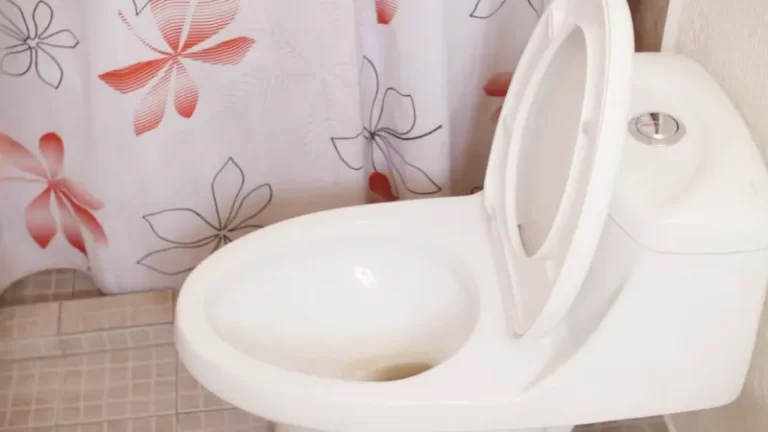Toilet in Front of Vanity: The Design Flaw You Must Avoid?
Placing a toilet directly in front of a vanity is one ofthe most common bathroom layouts, especially in powder rooms and narrow spaces. It’s a practical solution born from necessity, efficiently packing essential fixtures into a tight footprint. Yet, this decision often comes with a hidden cost: a sense of awkwardness and a visually cramped environment.
The core conflict is between spatial efficiency and user comfort. While the layout saves plumbing costs and fits challenging rooms, it can create a space that feels compromised. The central question for any homeowner or renovator is whether this layout is a fatal design flaw or a challenge that can be overcome with smart planning and strategic design.
You'll Learn About
Why the Toilet-Facing-Vanity Layout is So Common (and Controversial)
Understanding why this layout is so prevalent helps in navigating its challenges. For many homes, particularly older ones or tract builds, it’s the most straightforward and cost-effective way to arrange the plumbing. However, its practicality is often debated when weighed against the daily experience of using the space.
The Logic of Space Efficiency
In long, narrow bathrooms, often found in apartments or as en-suites carved from existing rooms, placing fixtures on opposite walls is a logical choice. This arrangement, known as a galley-style bathroom, maximizes the usable floor area. It simplifies the plumbing runs, often concentrating them along one or two walls, which is a major factor in both new construction and remodels where moving a toilet drain is a significant expense.
The Unspoken Awkwardness
The primary drawback is the direct line of sight. Using a toilet while facing your own reflection in a large vanity mirror can be uncomfortable. It removes the subtle sense of privacy many people prefer in a bathroom, even when they are alone. This “mirror effect” can make the room feel less like a relaxing sanctuary and more like a purely functional, and slightly exposed, space.
Functionality vs. Flow
This layout can also create a bottleneck. If one person is using the toilet, it may be difficult or uncomfortable for another to access the sink. This is particularly relevant in shared bathrooms. The flow of the room is interrupted, turning a potentially multi-functional space into a single-user zone at critical times.
The Non-Negotiables: Building Code & Clearance Requirements
Before exploring design solutions, it’s crucial to address the legal minimums. Building codes exist to ensure safety, accessibility, and basic functionality. Meeting these requirements is not optional, but it’s important to remember they are the starting point for design, not the end goal for comfort.
Different regions may follow slightly different codes, but most are based on the International Residential Code (IRC). These codes dictate the minimum clear space required around fixtures. Violating them can lead to failed inspections, costly rework, and an unsafe environment.
| Fixture Clearance | Minimum Code Requirement (IRC) | Comfort Recommendation (NKBA) | Why It Matters |
|---|---|---|---|
| Front of Toilet | 21 inches | 30 inches | Ensures adequate space to sit and stand comfortably without hitting the vanity. |
| Toilet Centerline to Side | 15 inches | 18 inches | Provides elbow room and makes cleaning easier. Applies to walls, tubs, or vanities. |
| Walkway (Toilet to Vanity) | 21 inches | 30-36 inches | Guarantees a passable walkway, but more space is needed to avoid a cramped feeling. |
From Flawed to Flawless: How to Master the Toilet-in-Front-of-Vanity Layout
Just because this layout has challenges doesn’t mean it’s destined to fail. With careful planning and clever design choices, you can transform a potentially awkward space into one that is both functional and aesthetically pleasing. The key is to think beyond the minimums and focus on creating a sense of space and separation.
Step 1: Maximize Your Measurements
The single most effective way to improve this layout is to maximize the distance between the toilet and the vanity. While the code might say 21 inches is enough, aiming for 30 inches or more will make a world of difference. Before finalizing your layout, use painter’s tape on the floor to mark the outlines of your toilet and vanity to get a real-world feel for the space.
Step 2: Choose Your Fixtures Wisely
The physical size of your fixtures has a huge impact on the perception of space. Opt for compact or wall-hung models to reclaim precious inches. A wall-hung toilet, for example, can save up to 9 inches of floor space compared to a standard model. Similarly, a floating vanity makes the room feel larger by exposing more floor, and a shallow-depth model can add critical inches to the walkway.

Step 3: Use Design Tricks to Create Visual Separation
Creating a sense of separation can mitigate the awkwardness of the layout. Instead of one large mirror that reflects everything, consider two smaller, separate mirrors above the sinks on a double vanity. You can also use lighting to your advantage. Strategic lighting, such as an interesting off-center vanity light, can create a focal point that draws the eye away from the toilet.
Flooring can also play a role. A runner rug placed in front of the vanity can define that area as a distinct zone, visually separating it from the toilet. This simple addition helps break up the “galley” feel of the layout.
Step 4: Add Distractions and Focal Points
Give the eye something more interesting to look at than the toilet. A bold piece of art on a side wall, a beautiful tile backsplash behind the vanity, or a statement pendant light can serve as a powerful focal point. By creating a clear visual hierarchy, the toilet becomes a background element rather than the main feature of the room.
When the Layout Just Won’t Work: Exploring Alternatives
Sometimes, despite your best efforts, the space is simply too small to make a toilet-facing-vanity layout comfortable. In these cases, it’s time to consider alternatives, ranging from minor adjustments to a full reconfiguration.
The Minor Adjustment: A Small Shift
Even a small change in location can make a big difference. If you have the space, moving the toilet so it’s no longer directly aligned with the vanity can break the direct line of sight. Understanding how much to move a toilet 6 inches can help you decide if this minor, yet effective, adjustment is within your budget.
The Major Overhaul: Reconfiguring the Bathroom
For a more comprehensive solution, a full reconfiguration might be necessary. This could involve placing the toilet and vanity side-by-side along one wall or creating a separate water closet for the toilet. This is a more expensive option but provides the best solution for privacy and flow. The layout of other major fixtures, like a fully enclosed shower, will play a significant role in what configurations are possible.
Frequently Asked Questions
Is it a problem to have a toilet directly in front of a vanity?
While not a conventional layout, placing a toilet in front of a vanity is possible, provided there is adequate clearance. Building codes typically require a minimum of 21 inches of clear space in front of the toilet. However, for comfortable use, 30 inches is the recommended distance.
What are the minimum clearance requirements for a toilet?
Building codes generally mandate at least 21 inches of clear space in front of the toilet to any wall or fixture. Additionally, there must be a minimum of 15 inches from the centerline of the toilet to any sidewall, partition, or vanity. For a more comfortable experience, a clearance of 30 inches in front and 18 inches to the side is recommended.
What are the pros and cons of placing a toilet in front of a vanity?
A potential advantage of this layout is that it can be a space-saving solution in a narrow bathroom. However, a significant drawback is that it can feel cramped and may not be aesthetically pleasing to everyone. Functionally, it might be awkward to use the sink or open vanity doors and drawers while someone is using the toilet.
Are there any design alternatives to a toilet directly in front of a vanity?
Yes, if space allows, offsetting the toilet from the vanity is a common solution. Another option is to create a separate toilet compartment within the bathroom for added privacy. In smaller bathrooms, a wall-hung toilet can free up some floor space and make the area feel less crowded.
Does a toilet in front of a vanity affect resale value?
An unconventional bathroom layout could potentially be a point of concern for future buyers. While it may not be a deal-breaker for everyone, a more traditional and spacious-feeling bathroom layout is generally preferred and may have a broader appeal.
The Final Verdict: Is a Toilet Facing the Vanity a Deal-Breaker?
A toilet in front of a vanity is not an inherent design mistake, but it is a layout that requires careful and deliberate planning to execute successfully. If left to minimum code requirements and standard fixtures, it can easily feel cramped and uncomfortable.
However, by prioritizing generous clearances, selecting space-saving fixtures, and using smart design strategies to create visual separation and focal points, this common layout can be elevated from flawed to flawless. The key is to design for human comfort, not just for spatial efficiency. With the right approach, you can create a bathroom that is both practical and a pleasure to use.

